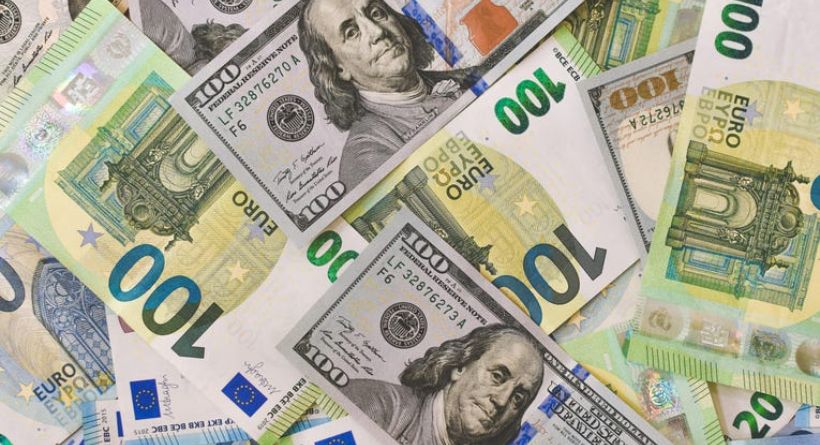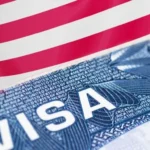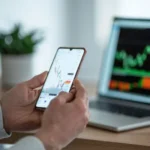Trading in foreign currency, often known as forex or FX trading, mainly is buying and selling other currencies.
To put it simply, foreign exchange transactions are made by Britons who exchange their pounds for another currency at a bureau de change, bank, post office, or travel agency before travelling overseas on vacation. Similar actions are taken by forex traders, but on a larger scale.
Because of the advancement of technology, it’s also a market where individual investors and traders may find possibilities if they have the necessary skills. Here is a closer look into currency and the important ideas to remember.
What is forex trading?
The speculative buying and selling of currencies during a forex transaction is done in an effort to make money. Additionally, it may be used to “hedge” current currency bets against potential exchange rate volatility. (Hedging is the process of guarding against the possibility of suffering a loss.)
To each of us individually, converting a few hundred pounds in vacation spending money would not seem like a huge problem. But the foreign exchange market is not just the biggest in the world; it is also the most actively traded.
The figures are staggering. The Bank for International Settlements’ most recent triennial (three-year) report estimates that daily global currency trade reached $6.6 trillion in 2019. To put this number in perspective, it is more than double the UK’s yearly gross domestic product, which is a measure of the total value of all products and services produced in a nation.
Open at all times
Since each stock market, including those in London, Frankfurt, and Hong Kong, operates during certain business hours, they are all stop-start operations.
In contrast, the FX market is open 24 hours a day and has four major trading centres: London, New York, Tokyo, and Sydney. The forex market will still be active at another location after trading has ended in one. Zurich, Frankfurt, Hong Kong, Singapore, and Paris are other cities where forex is traded.
Forex dealers aren’t always eager to take physical delivery of the currencies, unlike travellers who want foreign currency to pay for a drink by the pool.
The majority of forex trading occurs between institutional traders working for private clients, banks, other financial institutions, and multinational corporations.
Prior to the internet, the forex market was only accessible to large institutions and rich people. But times have changed, and today a tiny percentage of the forex market is made up of individual investors.
What drives forex trading?
Forex trading is done for a variety of purposes, such as to protect against risk associated with foreign exchange and interest rates. This is relevant right now because of the inflation fears plaguing the world’s economies and the close attention being given to the current level of interest rates.
Forex is also used to make predictions about the effects of geopolitical events, like as the escalation of tensions over Ukraine between Russia and the West. Political developments and natural catastrophes have the ability to drastically change a nation’s currency’s strength, which might result in trading profits or losses.
Forex is used by businesses as well. For instance, a global corporation with its headquarters in one place may utilize the forex market to manage the currency risk associated with transactions made by its subsidiaries all over the globe.
A portfolio of investments may benefit from diversity by using forex. The forex market’s 24-hour availability, five days a week, gives traders the chance to respond to news that may not have an immediate effect on a specific nation’s stock exchange.
The following economic indicators are used to analyse the FX market:
- Interest rates
- Inflation rate
- The balance of payments and economic strategies of a nation
- A government’s stance on intervening in the forex market.
There is no actual exchange of the underlying currency while trading forex since it is done “over the counter” (OTC). Instead, the market is essentially governed by an international network of banks and other financial organizations.
In the past, those who lacked the resources to trade forex on their own may have utilized a broker to transact on their behalf. But now that cellphones have developed and there are many internet trading platforms, it is conceivable for a person to engage in currency trading.
How is forex traded?
Predicting whether the value of one currency will rise or fall in relation to another is the basic goal of forex trading.
A trader may purchase a currency with the intention of selling it for a profit, believing that its value will rise. This is referred to as “going long.” Or a trader may sell a currency today on the theory that it would lose value tomorrow and then be repurchased at a lower price. This is referred to as “getting short.”
How currency exchange works
Every currency in the world has a three-letter code. These are comparable to the symbols used on stock exchanges, such as DGE for Diageo on the London market, to identify a certain corporation.
The US dollar, which trades under the ticker USD, is the most traded currency in the world. The euro (EUR), the Japanese Yen (JPY), the British pound (GBP), the Australian dollar (AUD), the Canadian dollar (CAD), the Swiss franc (CHF), and the New Zealand dollar are the next most popular currencies (NZD). Globally, there are more than 170 different currencies.
Currency pairings are the only method that currencies are exchanged in forex. This is due to the fact that you must sell one currency in order to purchase another.
The so-called “majors,” which make up around three-quarters of all trade on the forex market, are the following currency pairs:
- EUR/USD
- USD/JPY
- GBP/USD
- AUD/USD
- USD/CAD
- USD/CHF
- NZD/USD
All other currency pairings between the largest currencies in the world, including GBP/EUR, are referred to as minors.
Every currency pair consists of two components. The basic currency is the first. This portion is always equal to 1 when it appears in a trading quotation. The “quote currency” is the second component.
Take the GBP/EUR pair, which is now 1.19, as an example. The quotation currency is euros, whereas the base currency is the pound sterling (GBP) (EUR). Given the pairing, buying one pound will cost you 1.19 euros. Alternatively, it would cost €1.19 to purchase £1.
The amount you pay for a currency pair when you purchase it is known as the “ask,” and when you sell it, the price is known as the “bid.”
Ways to trade forex
Scaled forex trading may be done in three ways:
Spot market
The primary foreign exchange market is where currency pairings are traded and exchange prices are continuously assessed based on supply and demand.
Forward market
This is the process through which forex dealers tie themselves to one another and lock in a certain exchange rate for a specified quantity of money at a later time.
Futures market
This is when traders enter into a standard contract on a certain exchange to purchase or sell a pre-agreed quantity of currency at a specified exchange rate on a date in the future, as opposed to the FX and spot markets.
Forex jargon
- Monetary pair ‘Exotics’ refers to pairings that contain less-traded currencies like the Mexican peso in addition to the majors and minors mentioned above (MXN).
- The bid-ask spread. This is the difference between a currency pair’s purchasing and selling prices. A wide gap between the ask and bid prices is referred to as a large spread. Pips are used to express the spread.
- A pip in forex is typically a one-digit change in a currency pair’s fourth decimal place. Therefore, if the GBP/EUR rate changes from €1.19261 to €1.19371, it has changed by one pip. A “pipette” is a price fluctuation that occurs at the fifth decimal point in FX trading.
- When the Japanese yen is the quote currency, the pip rule is significantly altered. A pip is determined in this scenario as a one-digit change in the second integer after the decimal point. Changing the USD/JPY from 110.05 to 110.02 is a three-pip shift.
- An alternative name for borrowing money, which enables traders to play the forex market for higher sums of money than they may be able or willing to put up themselves.
- The down payment necessary to apply leverage in your trading.
Maximizing opportunities
‘Lot’ is another jargon word used in forex.
An FX trader won’t make much money even with a 50 pip shift if they are trading 100 or 500 units of currency. Because of this, the majority of FX traders purchase and sell currencies in “lots”—batches of currencies that let them profit from very tiny price changes.
Exchanging using a regular lot involves trading 100,000 units of money. One lot of EUR/USD is the equivalent of 100,000 euros in US dollars.
To avoid having to commit all of their cash to a trading position, traders employ leverage (see above) in this situation. With leverage, initiating a transaction only requires a small portion (the margin) of the complete value of your position.
Leveraged trading is perilous, however, since losses may be amplified to the point where they surpass the original loan amount.
Micro (1,000) and mini (10,000) batches of lots are also available.
How do I trade?
You may choose from a variety of trading applications and online platforms operated by FX brokers. Verify that your supplier is subject to Financial Conduct Authority regulation in the UK. Money should be kept in a separate account so that it will be protected in the event that your broker files for bankruptcy.
Know what kinds of deals you may wish to do in advance and inquire about the associated costs with the platform or app provider of your choice. The spread to execute a deal is likely to be larger the more obscure the currency combination.
There are forums on some of the most well-known sites where you may communicate with other users. If you’re a brand-new trader, keep an eye out for providers that provide online courses or the chance to practice trades using practice accounts funded with fake money.







